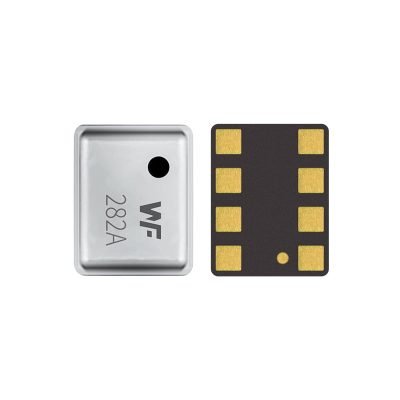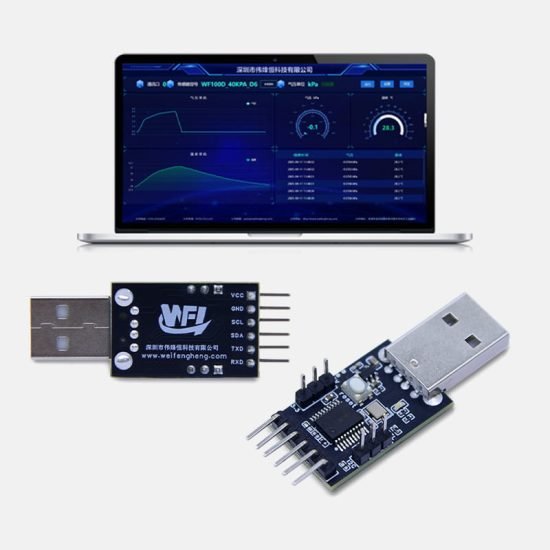カタログ
Modern wearable devices have increasingly stringent requirements for motion detection accuracy, and the performance limitations of traditional sensors in complex environments are becoming increasingly prominent. With their unique technical advantages, environmental pressure sensors have become the core solution for improving device sensitivity. Through intelligent data processing and dynamic model optimization, these sensors can maintain good performance in complex environments such as sweat, high temperature, and severe vibration.
1. High-Precision Sensing Architecture
1.1 MEMS Core Mechanism
MEMS pressure sensors utilize advanced microfabrication processes achieving nanometer-level structural precision. Silicon diaphragms convert mechanical signals to electrical signals through piezoresistive effects under external pressure.
1.2 Signal Conditioning Circuits
Built-in signal conditioning circuits feature low-noise amplifiers and filter combinations, effectively suppressing environmental noise interference on original motion signals through multi-stage amplification and real-time filtering.
1.3 Temperature Compensation
Integrated temperature sensors enable real-time monitoring with built-in compensation algorithms correcting output drift caused by temperature variations, ensuring consistent measurement accuracy across different environments.
2. Motion Detection Algorithm Optimization
2.1 Data Fusion Processing
Pressure sensor raw data undergoes multi-dimensional fusion processing, combining accelerometer and gyroscope data to construct comprehensive motion state models through AI-driven processing engines.
2.2 Real-time Detection Systems
Sensor systems feature millisecond-level response speeds, capturing motion state changes instantly. Optimized data calculation capabilities provide immediate feedback during motion occurrence.
2.3 Learning Evolution Capabilities
Built-in machine learning algorithms adaptively adjust based on user motion habits and environmental characteristics, continuously improving detection accuracy through pattern recognition.
3. Environmental Adaptability Design
3.1 Protection Rating Design
Sensors adopt high-grade protection designs functioning normally in sweat and moisture environments. Special packaging materials and sealing processes ensure internal circuit safety.
3.2 Anti-interference Performanceds
Sensors possess strong anti-interference capabilities maintaining stable measurement performance under electromagnetic interference and mechanical vibration through optimized shielding and filtering algorithms.
3.3 Multi-environment Adaptation
Sensor systems feature powerful environmental adaptation capabilities automatically adjusting working parameters for different usage conditions, maintaining stable performance across all weather conditions.
4. Low-power Integration Solutions
4.1 Power Management Strategy
Advanced low-power design concepts achieve extremely low power consumption while maintaining high performance through intelligent power management algorithms and dynamic working mode adjustments.
4.2 High-precision Flexible Sensors
Flexible substrate designs enable perfect body curve conformity providing comfortable wearing experiences while maintaining high-precision measurement capabilities.
4.3 Synchronization Precision
Multi-sensor synchronization precision ensures through hardware-software collaborative optimization, providing accurate time references for complex motion analysis.
5. Technical Performance Verification
5.1 Precision Testing
Rigorous laboratory testing and practical application verification demonstrate excellent detection accuracy across various motion modes with controlled error margins.
5.2 長期安定性
Long-term stability testing proves sensors maintain initial measurement accuracy after months of continuous use, providing reliable commercial application guarantees.
5.3 Compatibility Integration
Sensor designs consider compatibility with various wearable device platforms providing standardized interfaces and communication protocols.
結論
Environmental pressure sensors have significantly improved the sensitivity of motion detection in wearable devices through advanced MEMS technology and intelligent algorithm optimization. From high-precision sensing technology to environmental adaptability design, from low-power integration to performance verification, each technical link reflects the development level of modern sensor technology. These technological advances not only improve the accuracy of motion detection, but also enhance the practicality and reliability of equipment, laying a solid technical foundation for the development of the wearable device industry.
上記の紹介は、圧力センサー技術のアプリケーションの表面をなぞっただけです。私たちは、さまざまな製品で使用されているさまざまなタイプのセンサー素子、それらがどのように機能するか、そしてそれらの長所と短所を引き続き調査していきます。ここで説明する内容についてさらに詳しく知りたい場合は、このガイドの後半にある関連コンテンツをご覧ください。時間がない場合は、ここをクリックしてこのガイドの詳細をダウンロードすることもできます。 空気圧センサー製品PDFデータ。
他のセンサー技術の詳細については、こちらをご覧ください。 センサーページにアクセスしてください。


